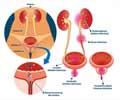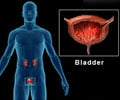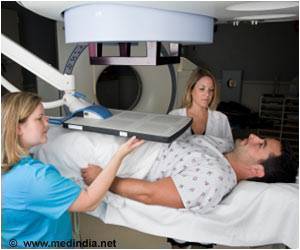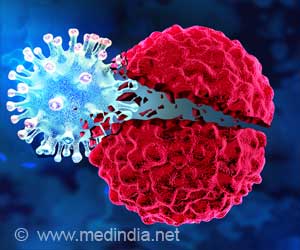Making tumors inside the bladder fluoresce red under blue light allows physicians to more easily find and remove them, substantially reducing the rate at which these cancers come back.
Making tumors inside the bladder fluoresce red under blue light allows physicians to more easily find and remove them, substantially reducing the rate at which these cancers come back, says a Mayo Clinic physician who is presenting results of a large, multicenter international clinical trial.
The findings, which are being reported at the annual meeting of the American Urological Association, show that this new diagnostic technique found more of the most common bladder tumors than the traditional white-light detection method in almost 17 percent of the patients, and demonstrated a 22 percent relative reduction in the recurrence rate within nine months of the procedure."This is the first demonstration that photodynamic diagnosis (PDD) cystoscopy along with the study drug (hexaminolevulinate) improves immediate detection, but more importantly reduces tumor recurrence rates of papillary bladder tumors; this is a significant improvement in treatment for our patients," says urologist Lance Mynderse, M.D., who practices at Mayo Clinic's campus in Rochester, Minn. The 766-patient phase III study was conducted in 28 U.S. and European centers, and its principal investigator is Barton Grossman, M.D., of The University of Texas M.D. Anderson Cancer Center. Dr. Mynderse is presenting study results as spokesman for the lead enrolling site in North America.
Bladder cancer is a dangerous, very time-consuming and expensive cancer to treat, primarily because non-muscle invasive bladder tumors recur in up to 70 percent of patients, Dr. Mynderse says. "Once a cancer develops anywhere in the bladder, it can come back in another place, rather like skin cancer recurrences," he says. As a result, patients need to be re-examined every three to six months, and that means
physicians need to examine the bladder from within, using a thin tube known as a cystoscope that has a lens and uses white light to illuminate the area. Additional testing is commonly performed and includes urine tests and radiographic studies. Once a tumor is detected, it is removed and then analyzed by histopathology.
The study compared use of the traditional white-light cystoscopy with photodynamic diagnosis using a special light source and lenses that can switch from white to blue light. The blue light is designed for use with the study drug (hexaminolevulinate), which is instilled into a patient's bladder prior to the therapeutic procedure. This acts as a prodrug that initiates a series of biochemical reactions in malignant cells which result in significant, preferential accumulation of photoactive porphryins. When the blue light is turned on, the tumors emit a red fluorescence. "The cancers appear bright red compared to normal tissue, which is a lighter blue-green," Dr. Mynderse says. "It is quite dramatic. One sees bladder tumors in a whole new light."
This study enrolled patients with higher risk of tumor recurrence who had either multiple papillary noninvasive bladder cancers or papillary tumors that had recurred within a year of being treated. All patients received an examination with white-light cystoscopy, and half were randomized to receive the agent and blue-light examination. Investigators found that this new technology detected at least one additional Ta/T1 tumor in 16.9 percent of the 278 patients randomized to blue light.
There was also a 46 percent increase in detection of high-risk bladder cancers known as carcinoma in situ (CIS), using the blue-light technique, Dr. Mynderse says.
Advertisement
The American Cancer Society estimated that almost 69,000 new cases of bladder cancer were diagnosed in the U.S. in 2008, and about 14,000 people died of the disease. Bladder cancer is much more common in men, and smoking is the greatest risk factor.
Advertisement
Source-Newswise
SRM















